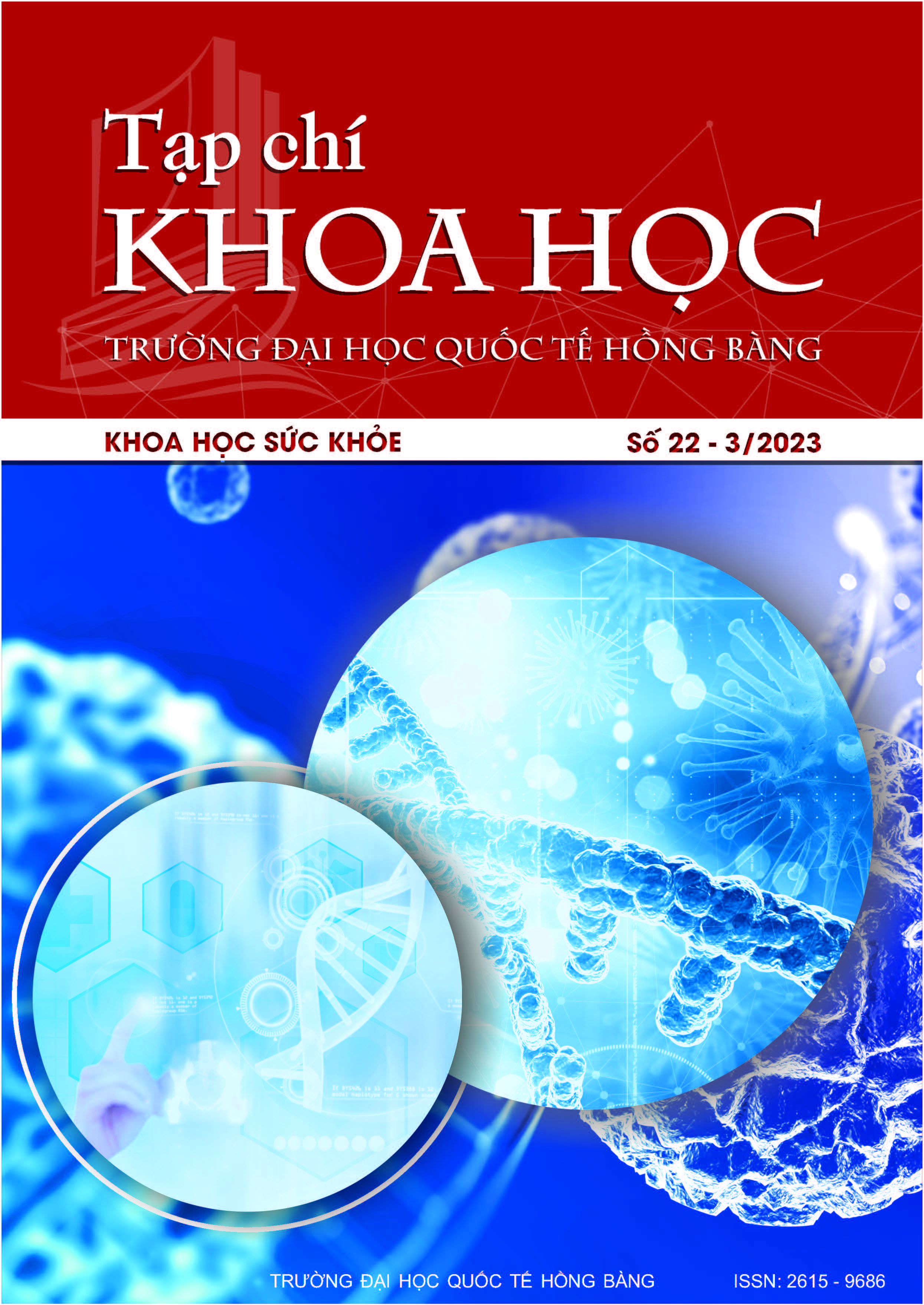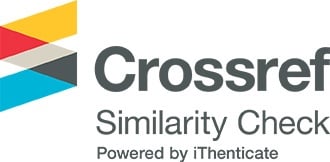Nghiên cứu tình hình hít sặc ở trẻ sơ sinh tại Bệnh viện Hùng Vương trong 10 năm (2010 - 2019)
Các tác giả
DOI: https://doi.org/10.59294/HIUJS.22.2023.285Từ khóa:
rối loạn đông máu, hồi sức, Bệnh viện Thống NhấtTóm tắt
Đặt vấn đề: Hít sặc có thể gây tử vong hoặc để lại di chứng nặng nề ở trẻ sơ sinh. Mục tiêu: Nghiên cứu mô tả đặc điểm dân số học và kết quả điều trị hít sặc ở trẻ sơ sinh tại Bệnh viện Hùng Vương từ năm 2010 đến năm 2019; một số yếu tố liên quan giữa đặc điểm của trẻ sơ sinh và kết quả điều trị hít sặc tại Bệnh viện Hùng Vương từ năm 2010 đến năm 2019. Đối tượng và phương pháp: Đối tượng chính là trẻ sơ sinh, tại Bệnh viện Hùng Vương. Nghiên cứu sử dụng thiết kế nghiên cứu hồi cứu hồ sơ bệnh án từ năm 2010 đến 2019. Kết quả: Có 26 trường hợp trẻ hít sặc tại Bệnh viện Hùng Vương từ năm 2010 đến 2019. Có 5 trẻ sơ sinh (19.2%) đã tử vong. Trẻ nữ có nguy cơ tử vong do hít sặc cao gấp 16.36 lần so với trẻ nam. Các trẻ từ 3-28 ngày tuổi có nguy cơ tử vong do hít sặc cao gấp 20.34 lần so với trẻ nhỏ hơn hoặc bằng 2 ngày tuổi. Kết luận: Có 19.2% trẻ sơ sinh tử vong sau khi hít sặc. Có mối liên quan về giới tính và số ngày tuổi trong việc gia tăng nguy cơ tử vong do hít sặc.
Abstract
Background: Aspiration can cause death or severe sequelae in neonates. Objectives: The study describes the demographic characteristics and outcomes of aspiration treatment in neonates at Hung Vuong Hospital from 2010 to 2019; some factors related to newborn characteristics and outcomes of aspiration treatment at Hung Vuong Hospital from 2010 to 2019. Materials and method: The main subjects were neonates at Hung Vuong Hospital. The study used a retrospective design based on medical records from 2010 to 2019. Results: There were 26 cases of aspiration children treated at Hung Vuong Hospital from 2010 to 2019. Five neonates died out (corresponding to 19.2%). Girls are 16.36 times more likely to die from aspiration than boys. Neonates 3 - 28 days old are 20.34 times more likely to die from aspiration than neonates younger than or equal to 2 days old. Conclusion: 19.2% of neonates died after aspiration. Gender and the days old increase the risk of aspiration death.
Tài liệu tham khảo
[1] G. Lorenzoni, A. Hochdorn, G. Beltrame Vriz, A. Francavilla, R. Valentini, S. Baldas, et al., "Regulatory and Educational Initiatives to Prevent Food Choking Injuries in Children: An Overview of the Current Approaches". Front Public Health, Vol. 10, pp. 830-876, 2022.
[2] K. Iwadate, M. Doy, and Y. Ito, "Screening of milk aspiration in 105 infant death cases by immunostaining with anti-human alpha-lactalbumin antibody", Forensic Sci Int, Vol. 122, pp. 95-100, 2001.
[3] B. O'Hare, J. Lerman, J. Endo, and E. Cutz, "Acute lung injury after instillation of human breast milk or infant formula into rabbits' lungs," Anesthesiology, Vol. 84, pp.1386-1391, 1996.
[4] A. Altmann and T. Nolan, "Non-intentional asphyxiation deaths due to upper airway interference in children 0 to 14 years", Inj Prev, Vol. 1, pp.76-80, 1995.
[5] M. A. Tabatabai, H. Li, W. M. Eby, J. J. Kengwoung-Keumo, U. Manne, S. Bae, et al., "Robust Logistic and Probit Methods for Binary and Multinomial Regression", J Biom Biostat, Vol. 5, pp. 202-210, 2014.
[6] G. Lorenzoni, D. Azzolina, S. Baldas, G. Messi, C. Lanera, M. A. French, et al., "Increasing awareness of food-choking and nutrition in children through education of caregivers: the CHOP community intervention trial study protocol", BMC Public Health, Vol. 19, pp.1156-1163, 2019.
[7] A. B. Sebastian van As, A. M. Yusof, and A. J. Millar, "Food foreign body injuries", Int J Pediatr Otorhinolaryngol, Vol. 76, Suppl.1, pp. 20-25, 2012.
[8] A. W. Hirsch, M. C. Monuteaux, G. Fruchtman, R. G. Bachur, and M. I. Neuman, "Characteristics of Children Hospitalized with Aspiration Pneumonia", Hosp Pediatr, Vol. 6, pp. 659-666, 2016.
[9] J. Thomson, M. Hall, L. Ambroggio, B. Stone, R. Srivastava, S. S. Shah, et al., "Aspiration and Non-Aspiration Pneumonia in Hospitalized Children with Neurologic Impairment", Pediatrics, Vol. 137, pp. 208-216, 2016.
[10] H. L. Streck, J. L. Goldman, B. R. Lee, J. M. Sheets, and A. L. Wirtz, "Evaluation of the Treatment of Aspiration Pneumonia in Hospitalized Children", Journal of the Pediatric Infectious Diseases Society, Vol. 11, pp.102-107, 2021.
[11] K. L. Swanson and E. S. Edell, "Tracheobronchial foreign bodies". Chest Surg Clin N Am, Vol.11, pp. 861-872, 2001.
[12] R. Kulkarni, S. Chauhan, B. Shah, G. Menon, and C. Puri, "Investigating Causes of Perinatal Mortality by Verbal Autopsy in Maharashtra, India", Indian Journal of Community Medicine, Vol. 32, pp.259-263, 2007.
[13] F. Behboudi, M. Pouralizadeh, M. R. Yeganeh, and Z. A. Roushan, "The effect of education using a mobile application on knowledge and decision of Iranian mothers about prevention of foreign body aspiration and to relieve choking in children: A quasi-experimental study", J Pediatr Nurs, Vol. 62, pp.77-83, 2022.
[14] A. D. Karatzanis, A. Vardouniotis, J. Moschandreas, E. P. Prokopakis, E. Michailidou, C. Papadakis, et al., "The risk of foreign body aspiration in children can be reduced with proper education of the general population", Int J Pediatr Otorhinolaryngol, Vol.71, pp.311-315, 2007.
Tải xuống
Tải xuống: 118











